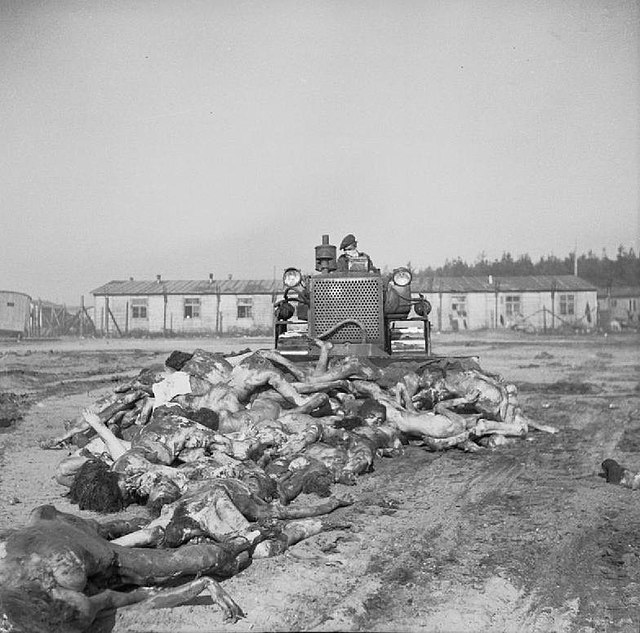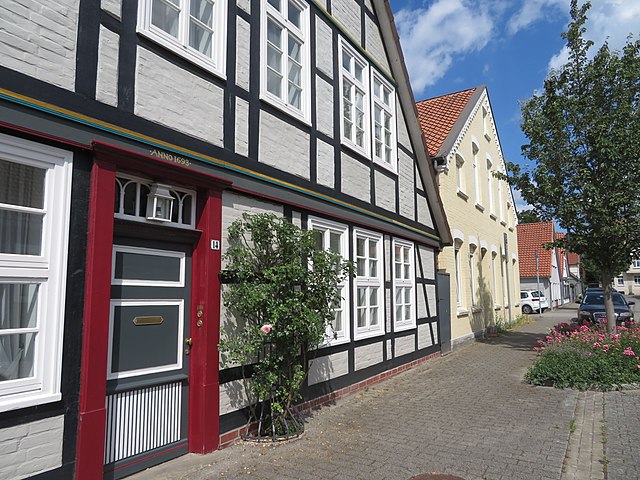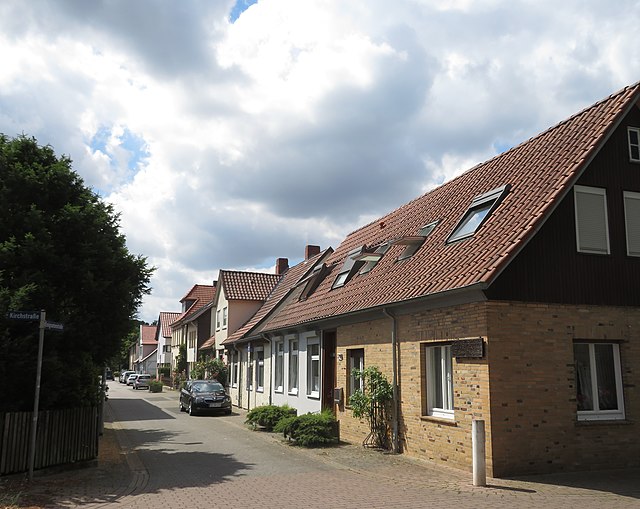The Celle massacre was a massacre of concentration camp inmates that took place in Celle, Prussian Hanover, in the last weeks of the Second World War. On 8 April 1945 over 3,000 internees being transported to Bergen-Belsen concentration camp were killed in an Allied air raid and subsequent attacks on survivors by SS guards, Gestapo, and Nazi party officials, as well as members of the public. Some of the perpetrators of the massacre were later tried but all of those convicted for the crime were set free in the early 1950s.
A British Army bulldozer pushes dead bodies into a mass grave at Belsen, 19 April 1945
Memorial and copper beech tree in Triftanlagen Park in Celle (2022)
Information board in Triftanlagen Park in Celle (2022)
Memorial in Celle
Celle is a town and capital of the district of Celle in Lower Saxony, in north-central Germany. The town is situated on the banks of the river Aller, a tributary of the Weser, and has a population of about 71,000. Celle is the southern gateway to the Lüneburg Heath, has a castle built in the Renaissance and Baroque styles and a picturesque old town centre with more than 400 timber-framed houses, making Celle one of the most remarkable members of the German Timber-Frame Road. From 1378 to 1705 Celle was the official residence of the Lüneburg branch of the dukes of Brunswick-Lüneburg, who had been banished from their original ducal seat by its townsfolk.
Celle Castle
Rooftop view of Celle
Hugenottenstraße is the main street of the former French quarter
Emigrantenstraße, a historical street laid out for Austrian refugees








